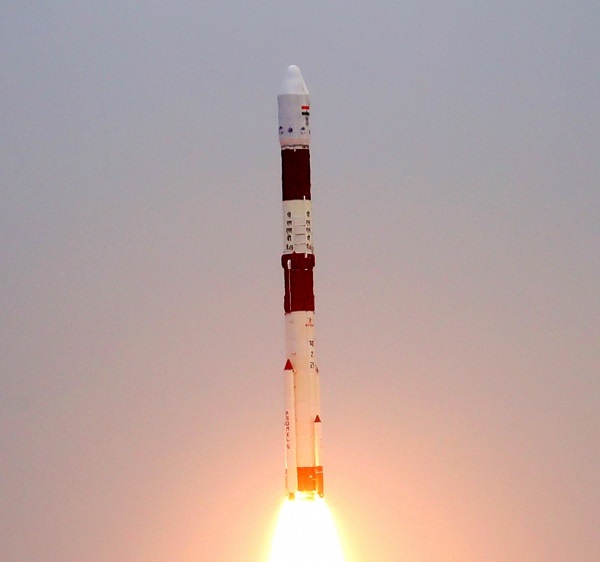Chennai, (Asian independent) The Indian Space Research Organisation (ISRO) plans to have about three/four space missions with its new rocket Small Satellite Launch Vehicle (SSLV) and then transfer the technology to the private sector, said a top official.
“The first flight of SSLV is slated this May. Then two/three more SSLV launches are also being planned. Following the successful launches the NewSpace India Ltd (NSIL) will issue the Request for Proposal (RFP) for the industry to take over manufacturing of the rocket,” S.Somanath, Secretary, Department of Space and Chairman, ISRO told IANS.
The NSIL is the commercial arm of the Department of Space with the mandate of building, launching rockets and satellites through industry partners and also providing space-based services through remote sensing and communication satellites.
Queried about the status of the RFP issued last year by NSIL for making ISRO’s another rocket Polar Satellite Launch Vehicle (PSLV) by consortium of industries, Somanath said: “A decision has to be taken on the modalities.”
He said earlier it was planned to source five PSLV rockets from the selected industry but whether the industry players will be enthused to make investments to make that number is the question.
The Indian space agency has been making the PSLV for the past several decades and how the PSLV technology is to be transferred to the selected industry has to be worked out.
“How to involve the industry on a continued basis in making PSLV, has to be thought out,” Somanath added.
The PSLV was an ongoing programme for ISRO. The initial thinking was the ISRO and the private industry making the rockets.
The NSIL officials had also said they would tender out the manufacturing of ISRO’s medium heavy rocket Geosynchronous Satellite Launch Vehicle (GSLV).
Like PSLV, the Indian space agency has been making the GSLV rockets to launch the communication satellites.
The issue of how the industry could be involved in production of GSLV has also to be thought out.
ISRO has built its rocket manufacturing facilities with huge investment and is manned by a large number of people.
“In the case of SSLV it is different. It is a new rocket and the industry will be involved after a couple of successful launches,” Somanath remarked.
On Monday ISRO successfully ground tested the newly developed solid booster stage/engine for the SSLV. The motor was fired for 150 seconds.
All the propulsion parameters during the test are found satisfactory and closely matching with the predictions.
The successful test of the solid booster stage has given sufficient confidence to proceed with the first developmental flight of SSLV (SSLV-D1) which is scheduled in May 2022, ISRO said.
The 34-metre tall with a lift off mass of 120 tonne, the SSLV is a three staged/engine rocket all powered by solid fuel.
The SSLV is being designed to have a carrying capacity of about 500 kg targeting the small satellite launch market.
As a matter of fact, the ISRO is getting orders from foreign parties to launch small satellites.
The first static test of SSLV’s solid fuel motor was unsuccessful as there were some issues with the engine’s nozzle.
An official had earlier told IANS that the second test will be with the engine that was kept for the rocket. A new first stage engine for the rocket has to be built.
The other two stages/engines for the proposed SSLV have been tested earlier and are ready for integration.
However, the one question that remains unanswered is whether SSLV will have a new name than the unimaginative and long winding one that it sports now.








